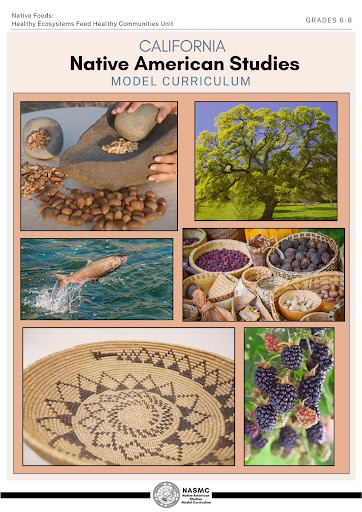Overview
Free Resources!
Introduction to Oak Woodlands Ecosystem

Author: This unit was researched, authored, and edited by the California Indian Museum and Cultural Center, California Indian Education for All, and the San Diego County Office of Education. Key writers and researchers of this unit are Nicole Lim, Jayden Lim, and Dr. Staci Block. The unit resources were designed and created from funding through the California Department of Education’s Native American Studies Model Curriculum grant and contract.
Grade(s): 6th-8th Grades
Suggested Amount of Time: 60 minute
Curriculum Themes
- History
- Relationship to Place
Learning Goals
Understand the basic features of the Oak Woodlands ecosystem.
Identify the cultural significance of key species to the Pomo people.
Recognize the relationships within a food chain and their impact on ecosystem health.
Reflect on the connections between culture, nature, and sustainability.
Lesson Overview
This lesson introduces students to the Oak Woodlands ecosystem, an area of cultural and ecological significance for the Pomo people. Students will learn about key species, their roles within the ecosystem, and their importance to Native traditions. Additionally, students will explore the connections between culture, ecosystems, and sustainability through vocabulary activities and food chain exploration.
Teacher Background
This lesson introduces students to species and food sources traditionally significant to the Pomo people. By learning Indigenous words for local plants and animals, students begin to explore the interconnectedness of species within food chains and food webs. This foundational understanding will deepen as students examine the Oak Woodlands ecosystem in greater detail throughout subsequent lessons.
The Oak Woodlands ecosystem, characterized by oak and conifer trees, native grasses, and flowers, features a Mediterranean climate with dry summers and wet winters. For the Pomo people, this ecosystem supports not only their food sources but also cultural practices like basket-making. However, access to these resources has been limited by privatization and regulations on gathering, impacting both cultural traditions and ecological health. Responsible cultural gathering, as practiced by Native people, helps maintain balance, reduces wildfires, and prevents the spread of invasive species.
The Oak Woodlands ecosystem, located in California, is home to a diverse range of oak trees, conifer trees, and native grasses and flowers. With a Mediterranean climate characterized by hot, dry summers and mild, rainy winters, this ecosystem plays a vital role in the cultural, spiritual, and subsistence practices of the Pomo people.
For the Pomo, cultural traditions are inseparable from the ecosystems they inhabit. For example:
Baskets, which are central to many cultural practices, rely on the availability of specific plants found in the local ecosystem.
The loss or limited access to these natural resources threatens cultural traditions and the ability of Pomo communities to sustain practices that have been passed down for generations.